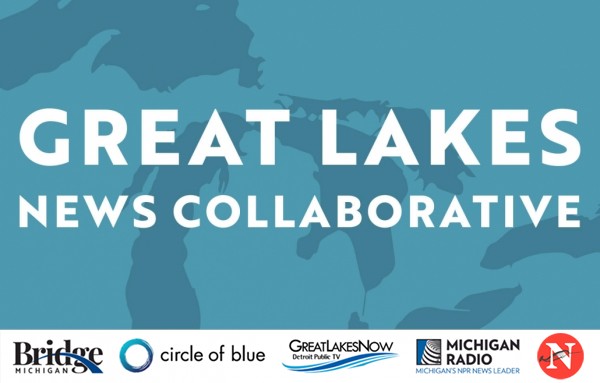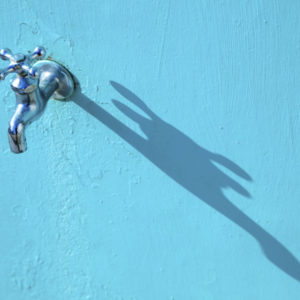Fresh, December 10, 2024: Concerned Scientists Call for Upper Midwest Wetland Protections in New Farm Bill
December 10, 2024
Fresh is a biweekly newsletter from Circle of Blue that unpacks the biggest international, state, and local policy news stories facing the Great Lakes region today. Sign up for Fresh: A Great Lakes Policy Briefing, straight to your inbox, every other Tuesday.
— Christian Thorsberg, Interim Fresh Editor
This Week’s Watersheds
- A new report highlights the local health disparities caused by 17 coal-fired steel and coke facilities operating in the Great Lakes region.
- The Union of Concerned Scientists has released a new report urging Congress to make wetland protections in the Upper Midwest a focus of the new farm bill.
- In Superior, Wisconsin, environmental groups are urging the state Supreme Court to hear a challenge over a gas plant that threatens local river and wetland health.
- Sheboygan, Michigan, is among seven communities to receive new funding for coastal resiliency work along Lake Michigan’s shores.
On Minnesota’s Iron Range, a taconite mine 15 years in the making may now be about a year away from beginning production.
“We have about $1.8 billion invested to date, with about another $500 to $600 million to go. So all in we’ll be about a $2.5 billion investment, which is one of the largest capital investments in the history of Minnesota.” — Larry Sutherland, CEO of Mesabi Metallics
Controversy has surrounded the 16,000-acre Mesabi Metallics mine since its inception nearly two decades ago in Minnesota’s Iron Range, a region of iron ore-rich land located near Lake Superior, Minnesota Public Radio reports.
The mine is owned by the Indian-based company Essar Steel, whose history of late payments, debts, and lease battles has done little to win favor with state officials. Minnesota Gov. Tim Walz once tried to ban Essar Steel from the state after it missed several payments worth tens of millions of dollars. Ongoing mineral lease battles with the state Department of Natural Resources continue to hold up the project. The company also needs to secure environmental permits from the Minnesota Pollution Control Agency before it can begin operating.
But support from local communities, who will benefit financially from the mine, is strong. And now, after clearing the $26 billion in debt the company had to its name, Essar is poised, pending permits, to begin the process of removing iron ore from the ground and processing the material to produce taconite pellets by the end of next year.
Fresh from the Great Lakes News Collaborative

- Oil Spills and Buried Rivers — Great Lakes Now
- Move over, coal-mine canaries: Michigan study says robins can predict soil lead — Bridge Michigan
- Nipissing First Nation greenhouse provides year-round fresh food in northern Ontario — The Narwhal
- Legislation would restore a portion of MI’s environmental protection act — Michigan Public
Bridge Michigan, Circle of Blue, Great Lakes Now at Detroit Public Television, Michigan Public and The Narwhal work together to report on the most pressing threats to the Great Lakes region’s water. This independent journalism is supported by the Charles Stewart Mott Foundation. Find all the work here.

With New Farm Bill in Balance, Scientists Urge Wetland Protections
Earlier this week, the Union of Concerned Scientists (UCS) shared a new report titled “Wetlands in Peril: How Industrial Agriculture Damages Critical Ecosystems, Increasing Flood Risk in the Upper Midwest,” urging Congress to address regional agricultural runoff and wetland protections in the next farm bill.
The UCS defines the Upper Midwest as Iowa, Illinois, Michigan, Minnesota, North Dakota, Nebraska, South Dakota, and Wisconsin. Across this area, the amount of land used for agriculture is more than 7.5 times the amount of wetlands, though the value of the latter is significant. UCS estimates that roughly 30 million acres of wetlands “provide nearly $23 billion in annual residential flood mitigation benefits” for local communities. On the whole, “protecting these wetlands could prevent between $323 billion and $754 billion in flood damages in this region” over the long term.
Since the United States became a country, roughly half of its wetlands have been lost. Over the last 20 years this trend has accelerated, with commercial farming identified by the EPA as the habitat’s biggest threat, especially after a U.S. Supreme Court decision last year reduced federal protections. “Healthy soil acts like a sponge,” Stacy Woods, the research director for the Food and Environment program at the Union of Concerned Scientists and the report’s author, told Interlochen Public Radio’s Izzy Ross. “It sucks up and holds onto excess fertilizer and pesticides and manure and all of those things that can become pollution if it runs off of this agricultural land and into waterways.”
The previous farm bill, which was signed in September 2018 and reauthorized roughly $428 billion in spending over this past five-year period, expired on September 30. It is currently unknown if Congress will sign a new bill before the end of the calendar year. In its report, the UCS strongly encourages lawmakers to strengthen policies that incentivize farmers to curb runoff and “take part in conservation, restoration, and sustainability efforts,” Interlochen Public Radio reports.
In the News
Steel Industry Pollution: According to a new report released in late October by the nonprofit research group Industrious Labs, Great Lakes communities are facing disproportionate health stress from 17 steel and coke plants operating in the region. The coal-based facilities — located in Illinois, Indiana, Michigan, Ohio, Pennsylvania, and West Virginia — “are linked to cancer rates 12 percent to 26 percent higher than the national average,” Great Lakes Echo reports. Fine particulate pollutants from these plants are attributed to up to 892 premature deaths, 250,000 cases of asthma symptoms, and $13.2 billion in healthcare costs annually. Each facility ranked in its respective state’s top 70 emitters for nitrogen oxides and sulfur dioxides. While quantifying water pollution was beyond the report’s scope, “steelmaking generates considerable water pollution and toxic waste,” it said, later adding that these “are critical concerns that warrant additional investigation, analysis, documentation, and solutions.”
Nemadji Trail Energy Center: In 2020, the Nemadji Trail Energy Center — a $1 billion gas-fired power plant located on the Nemadji River and estimated to produce 3 million tons of greenhouse gas emissions each year — was approved by the state Public Service Commission, Wisconsin Public Radio reports. Indigenous and environmental groups, including Clean Wisconsin and the Sierra Club, are arguing that the commission’s environmental review was inadequate, putting wetlands and river systems at risk should the proposed plant operate. Late last week, they petitioned the state Supreme Court to review their lawsuit against the project.
Looking Ahead
Sheboygan Erosion: Sheboygan has received new funding from the Great Lakes and St. Lawrence Cities Initiative to design a new coastal erosion plan along the shores of Lake Michigan, the Sheboygan Press reports. About $300,000 will cover between 30 percent and 60 percent of the project.
Upcoming Events
December 19 — Adaptive Forestry for a Resilient Climate — learn more
Other News
EPA Flags BASF: More than 60 gallons of polluted water flow from BASF’s Wyandotte facility into the Detroit River every minute, Planet Detroit reports. The EPA has flagged the company for its continued contamination of the watershed, which currently holds more than 4.6 million cubic yards of polluted sediment.
Great Lakes’ Record High Temperatures: Lakes Michigan, Huron, Erie, and Ontario have all experienced record-high average surface temperatures so far this year, compared to the 30-year satellite record, according to NOAA.
Christian Thorsberg is an environmental writer from Chicago. He is passionate about climate and cultural phenomena that often appear slow or invisible, and he examines these themes in his journalism, poetry, and fiction.






Leave a Reply
Want to join the discussion?Feel free to contribute!